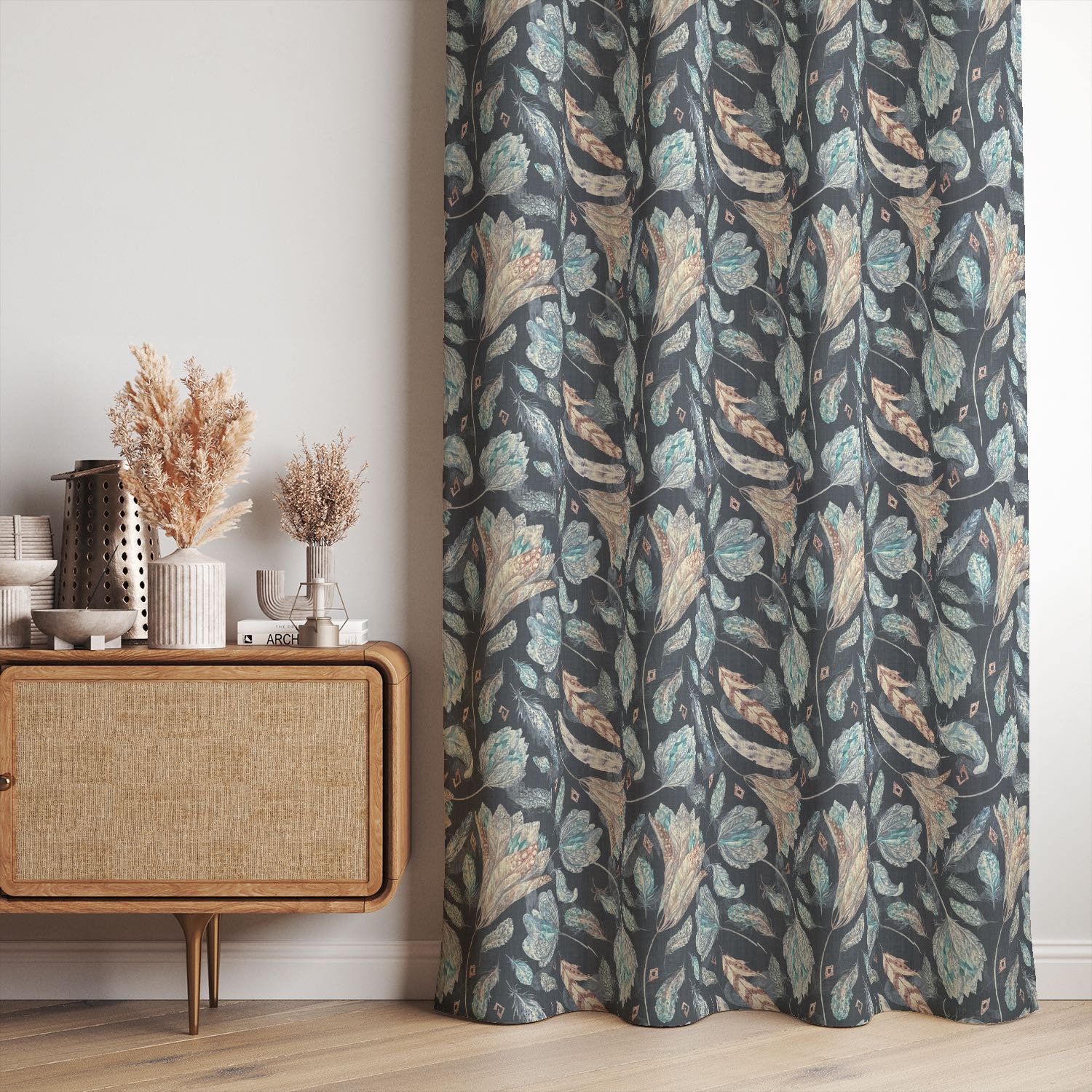Spurred on by environmentally-friendly upcycling trends, ever-important money-saving habits, and increasing lengths of time spent at home, more and more people are giving upholstery a go.
With the right tools and techniques, anyone can achieve neat, stylish upholstery - even total beginners. We’re here to provide expert advice to help everyone to achieve a perfect upholstery finish. From concealed edges and neat corners, to braided trim and edge rolls, we’re here to help you get started with DIY home improvements.
HOW TO FINISH UPHOLSTERY EDGES
To create a straight edge with a concealed seam, use an upholstery tack strip. This simple cardboard strip creates a professional finish in seconds!
- Measure the straight edge that you need to upholster and cut a piece of cardboard tack strip to size.
- Lay a piece of fabric, reverse-side up, over the edge that you need to cover, with an inch or two of excess to fold underneath.
- Push the tack strip as far into the seam’s edge as possible, and attach with tack pins or staples.
- Simply fold back your fabric and you’ll see a professionally finished upholstery edge - without a fray in sight!
HOW TO MAKE NEAT CORNERS WHEN UPHOLSTERING
Upholstering corners needn’t be a task to shy away from. For common projects, like reupholstering seat covers, pleated corners and complex welted edges are unnecessary. You can achieve a neat upholstery finish on corners and seams in three simple steps: Staple, Fold, Trim.
Step One: Staple all the way around your material, stopping about 2 inches from each corner.
Make sure that all of your straight edges are securely stapled into place. Don’t try to tackle corners whilst your fabric is loose elsewhere!
Step Two: Fold the fabric where it reaches the corner.
The easiest way to make neat upholstered corners is to fold your fabric like you’re wrapping a present. This method allows for quick, symmetrical corners, but can add a few millimetres of bulk to your upholstery edge.
Alternatively, with the under-side of the corner facing up, try pinching your excess fabric upwards to form a diagonal “sail” at a 45-degree angle to the corner. By stapling along the base of this “sail”, on both sides, you can create a neat edge with no need to fold or overlap the fabric.
Step Three: Trim any excess fabric from your corners.
Working with an overhang provides a safety net for beginners, but you will likely end up with a lot of fabric bunched in the corners. Use sharp fabric scissors to trim away any excess fabric.
You may want to save a narrow “tail” - a strip of fabric hanging from the corner - to cover your line of staples. (Though, as your staples are on the reverse or underside of your project, this is completely optional.)
TOP TIP: For thick fabric, like leather, try to make as few overlapping folds as possible. As it can be difficult to staple through multiple layers of thick fabric, try the diagonal “sail” technique before trimming away any bulky excess.
HOW TO ATTACH UPHOLSTERY TRIM
Upholstery trimmings are both a stylish, decorative feature and a convenient way to hide any staples or uneven fabric edges. Gimp braiding or flanged piping cord are the simplest choice of trim for beginners. Once you have chosen your upholstery trim, you can attach it using tacks or a hot glue gun - depending on the aesthetic you’d like to achieve.
Attach upholstery trim with glue
Use a glue gun to attach your braiding seamlessly.
To attach your gimp braiding, fold the frayed end and start somewhere inconspicuous - the underside, back, or far corner of your piece of furniture. This will help to finish your upholstery edges neatly.
Apply a thin line of glue on the underside of the braid and attach the gimp tightly along the edge of the fabric. Apply pressure to the trim for a few seconds and work on just a few inches of braiding at a time. Be careful not to use too much glue, as it can be difficult to remove any overflow.
Once you have completed the edge, trim the excess braiding. Leave 1-2cm of braiding to fold over and hide the joint.
Attach upholstery trim with tacks or nails
Use nails for a visible studded effect. You can choose between discreet pins, which will blend in with your gimp braid, or larger upholstery nails with statement domed heads. Whichever style you prefer, the application process is very similar.
Using a tack hammer or lightweight mallet, pin the end of your braiding somewhere discreet. Remember to fold over the first centimetre, to prevent fraying.
Holding the trim in one hand, guide the trim around the edge of your fabric, adding tacks to the centre of the braid at regular intervals. As a rule of thumb, tacks should be no more than 1 inch apart, to ensure that the trim stays in place. Remember to pull the braiding taut, to prevent any areas from sagging!
TOP TIP: Use an upholstery nail strip to achieve a metallic edge trim without the hassle of attaching dozens of individual nail heads. These metallic strips come in various colours and are ideal for beginners who want to make an impact with this upholstery finish.
HOW TO MAKE AN UPHOLSTERY EDGE ROLL
Edge rolls are an accentuated, padded version of piping cord; they soften furniture edges and add statement curves.
On small upholstery projects, you can use thick-grade piping cord to create an edge roll effect. Choosing a flanged piping cord will make it far easier to attach this curved trim to the edge of your fabric.
TO MAKE YOUR OWN UPHOLSTERY EDGE ROLL:
- Lie a strip of foam (or cord/rope) atop a piece of your chosen fabric.
- Fold the fabric over, encasing the foam roll and leaving an adjacent strip of fabric about an inch wide.
- Sew a line as close to the foam as possible, to encase the edge roll tightly within the fabric pocket.
- Bend the foam roll around the edge of your furniture - usually chair arms - as desired.
- Attach with tacks through the flanged edge (or excess strip of fabric), trying to stay as close to the sewn line as possible for a neat edge.
PREPARE FOR YOUR FIRST UPHOLSTERY PROJECT!
Make sure that you’re equipped with the right tools for the job before you begin. Start with our checklist of essential tools for beginner upholsterers and find everything you need in our upholstery supply warehouse.
Beyond aesthetics, our fabrics each have different characteristics. Some fabrics are stretchier than others, whilst some are thicker and stay taut without tacking. A fabric that’s not too thick, and not too stretchy will make it easier to achieve a neat upholstery finish. Read our detailed advice on the uses of different upholstery fabrics to inform your project.
For further advice or information, explore our expert blog or get in touch.



